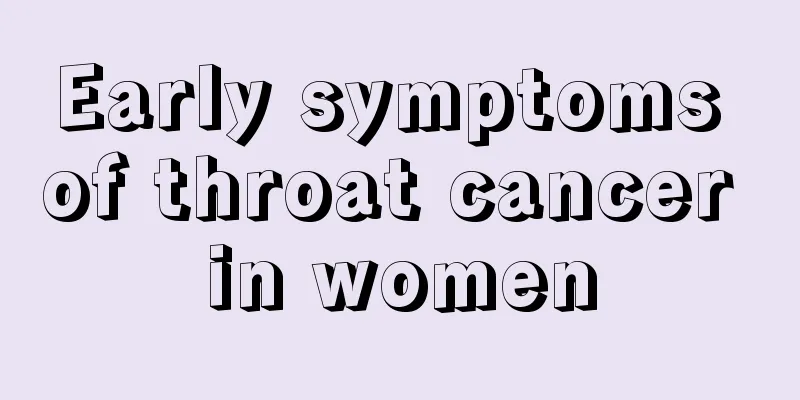Are the infectious disease department and the infectious disease department the same?

|
Many people know that infection and contagion have two different meanings. And when we were in the hospital, they were in two different departments. But did you know that these two departments were actually the same in the beginning? Although why are infectious diseases and infectious diseases now distinguished? In fact, this has a lot to do with the characteristics of many diseases. Today we will take a closer look at the division of infectious diseases and infectious diseases.
Now most hospitals in the country have changed the infectious department to the infectious department. So are infection and infectious department the same? What is the difference between infectious department and infectious department? Different from others, everyone is more familiar with infectious diseases, such as viral hepatitis, bacillary dysentery, typhoid fever, meningitis, Japanese encephalitis, measles, chickenpox, etc. Why are these diseases called infectious diseases? Simply put, because they are contagious and can be transmitted from patients to healthy people. For example, in a kindergarten, if a child gets an infectious disease, it may be transmitted to many children in a short period of time. But a more important point is that infectious diseases have the characteristics of epidemics, that is, a certain infectious disease may spread in a certain area at a certain time, causing many people to become ill, such as the "SARS" in 2003 and the "H1N1 influenza" in 2009, that is, pandemic infectious diseases. However, whether it is contagious or Well, whether it is an epidemic or not, there must be something tangible that plays a role in the onset of the disease, and this is "Pathogen". It includes bacteria, fungi, viruses, chlamydia, mycoplasma, rickettsia, spirochetes, and parasites, a total of 8 major categories! These pathogens enter the human body through various pathways. Whether it is the process of entering the body or the growth and reproduction after entering the body, they can cause damage to the body. Some of these pathogens (not all) can be transmitted from person to person. We call this process of pathogens causing disease "infection." In fact, "infection" is a broad concept. Most people have experienced "infection" or infectious diseases, such as colds, skin boils, tonsillitis, bronchitis, pneumonia, cholecystitis, bacterial dysentery, urinary tract infection, appendicitis, hepatitis, meningitis, malaria, intestinal roundworms, tinea pedis, tinea corporis, etc., etc., are all infectious diseases. Infectious diseases are a special type of infectious disease. As mentioned earlier, the biggest characteristics of infectious diseases are that they are contagious and epidemic. Pneumonia, cholecystitis, appendicitis, etc. are generally not contagious and will not spread, so they are not infectious diseases, but infectious diseases.
Why should the infectious department be changed to the infectious department? In summary, there are three reasons for changing the infectious department to the infectious department: First, the spectrum of diseases has changed significantly in recent years. In our country, whether in rural areas or in cities, due to the improvement of people's living standards; the rapid development of medical and health services; the general improvement of the national awareness of epidemic prevention and disease prevention and medical knowledge, the incidence of infectious diseases in our country has been declining year by year since liberation. Some infectious diseases have disappeared, such as smallpox; some infectious diseases are about to disappear, such as polio and leprosy; the incidence of some common infectious diseases is getting lower and lower, such as dysentery, typhoid, etc. Even for viral hepatitis, the number of cases has decreased significantly due to the prevention of vaccines in recent years. Generally speaking, the total number of cases of infectious diseases in the traditional sense is decreasing. Therefore, the importance of infectious diseases department gradually declined. But this does not mean that there is no need for infectious disease departments. On the contrary, due to the extension of human life expectancy, serious environmental pollution, the increase in the number of malignant tumors, the increasingly serious problem of abuse of antibiotics, the increasing number of people with low immune function, etc., many new problems have emerged, such as hospital infection, which is a very serious problem; the emergence of new infectious diseases was also unexpected in the past. The above situations require that the past infectious disease department or infectious diseases should be repositioned and change its model. Second, people are not unfamiliar with these infectious diseases. However, for non-medical workers, the word "infection" not only sounds unfamiliar, but is also difficult to pronounce. Third, infectious diseases are essentially infectious diseases and a special type of infectious diseases. In view of this, we can divide infectious diseases into two categories: infectious and non-infectious. In contrast to the downward trend in the incidence of infectious diseases, various non-communicable infectious diseases have shown a clear upward trend in recent years. In a sense, their harmfulness has far exceeded that of infectious diseases. Due to environmental pollution, densely populated areas, general lack of physical exercise among urban residents, excessive obesity, aging, an increase in the number of cancer patients, and a rise in the incidence of diseases related to immune dysfunction, the incidence of various infectious diseases is increasing. In addition, due to the widespread development of interventional diagnosis and treatment techniques, catheter-related infections are also increasing. There is also the so-called hospital-acquired infection, that is, the problem of infection occurring during hospitalization and treatment in a hospital is becoming more and more serious. According to statistics, the chance of burn patients being infected in the burn ward is 100%! Another more serious phenomenon is the increase in drug-resistant strains due to the abuse of antibiotics by doctors or patients, making the treatment of infectious diseases increasingly difficult. Therefore, the scope of diagnosis and treatment of the infectious disease department has been expanded. In addition to infectious diseases, various infectious diseases are within the scope of diagnosis and treatment of the infectious disease department. In particular, the rational use of antibiotics is a consideration of a hospital's medical and management levels, and the infection department plays a vital role. This is also one of the reasons why the state requires that hospitals at or above the second level must establish an infectious disease department.
Airborne infection Some pathogens can spread freely in the air, usually with a diameter of 5 microns. They can float in the air for a long time and move long distances. They are mainly infected through the respiratory system and are sometimes confused with droplet transmission. Droplet infection Droplet transmission is the main route of transmission for many infectious agents. When a patient coughs, sneezes or talks, warm and moist droplets are sprayed out. Pathogens attach to them and are dispersed by air disturbances, floating in the wind for a short time and distance. The next host then attaches to them when breathing, opening the mouth or accidentally touching the surface of the eyes, causing the new host to be infected. For example: bacterial meningitis, chickenpox, common cold, influenza, mumps, tuberculosis, measles, German measles, whooping cough, etc. Since the droplets are small in quality and quantity and cannot carry heavier pathogens, parasitic infections are rarely transmitted to other individuals through this route. Fecal-oral transmission It is common in developing countries where the health system is not yet sound and education advocacy is inadequate. Untreated wastewater or pathogen-contaminated materials are directly discharged into the environment, which may contaminate drinking water, food, or utensils that touch the oral and nasal mucosa. Incomplete cleaning after going to the toilet can cause infection to the ingested through the eating process. The main pathogens can be viruses, bacteria, and parasites, such as cholera, hepatitis A, polio, rotavirus, and toxoplasmosis, which may also occur in developed countries. Sometimes, some organisms may be infected through contact with the patient's excrement because their body surface tissue structure is not sufficient to protect the individual. Under normal circumstances, this exception does not occur in the human population. Contact infection The transmission method through direct contact is called contact transmission. In addition to direct touching and kissing of patients, this type of disease can also be spread through sharing of personal equipment such as toothbrushes, towels, razors, tableware, clothing, etc., or through the patient's contact and leaving pathogens in the environment. Therefore, such infectious diseases are more common in places such as schools and the military where items may be accidentally shared. For example: athlete's foot caused by fungal infection, impetigo caused by bacterial infection, warts caused by viral proliferation on the epidermis, and syphilis is a special case, usually caused by a healthy individual coming into contact with the chancre of an infected person. Sexually transmitted diseases include any disease that can be transmitted through sexual intercourse and are therefore a type of contact transmission. However, due to the serious prevalence of AIDS in the world, it is sometimes discussed independently in medicine. The main infectious agents are usually bacteria or viruses, which are transmitted to sexual partners through direct contact with genital mucosal tissue, semen, vaginal secretions or even pathogens carried in the rectum, causing infection. If there are wounds in these areas, the pathogens may spread the blood infection to other parts of the body. Vertical transmission Vertical transmission refers specifically to diseases that the fetus acquires from the mother. "In utero" in Latin means a form of infection "in the womb". The pathogens that usually infect the fetus through this method are mainly viruses and small, highly active parasites that can be transported through the blood or have the ability to pass through tissues or cells, and can therefore be transmitted from mother to child through the placenta, such as AIDS and hepatitis B. Although bacteria are less likely to be transmitted vertically, syphilis can be transmitted during delivery when the fetus's mucous membranes or eyes come into contact with infected mucous tissue in the mother's vagina; and in a few cases, the newborn is infected through breast milk secretions during breastfeeding. The latter two paths also fall into the category of vertical infection. Blood infection The process of transmitting disease to another individual mainly through infection of blood and wounds is called blood transmission. It is common in medical use of injection equipment and negligence of blood transfusion technology. Therefore, many medical institutions require the implementation of related medical procedures, and must go through multiple, multiple confirmations to avoid harming patients. During blood donation and blood transfusion, further tests are also conducted on the relevant physiological conditions of donors and recipients to reduce the risk of such infections. However, due to the use of *, the sharing of needles can cause difficult-to-prevent infections, especially for the prevention of AIDS. |
<<: How to cultivate oneself for a person with a restless mind
>>: Is the 5th sacral vertebra fracture serious?
Recommend
Is it possible that bone cancer is hereditary?
Bone cancer is the most painful cancer for patien...
Is it good to have thyroid cancer without pain or itching?
Thyroid cancer is painless and has a good prognos...
What to do if there are oil stains on clothes
If there are oil stains on clothes, they should b...
Food poisoning treatment methods
Recently, many people have suffered from food poi...
How does depression come about?
Depression is a mental illness, which should neve...
How to measure a child’s bone age?
Today's parents are particularly concerned ab...
Steps for preparing normal saline solution
Sodium chloride injection is actually normal sali...
Is renal hamartoma a renal cyst? Three differences between renal hamartoma and renal cyst that you should know
There are three main components of renal angiomyo...
Why do I always feel nauseous and retching when brushing my teeth?
Brushing teeth in the morning and evening is an i...
Two common palliative surgeries for pancreatic cancer
Palliative surgery is currently a common method o...
How to do health exercises for lumbar disc herniation
Lumbar disc herniation is a common problem. This ...
Is cold light whitening effective for fluorosis?
Dental fluorosis is also a common oral problem. W...
Nine out of ten women have cervical erosion. What should they pay attention to in order to prevent cervical cancer?
A survey found that about 75% of women suffer fro...
What are the symptoms of knee rheumatism
Rheumatism is a disease that occurs very frequent...
Can cardia inflammation heal itself?
Cardiac inflammation is a type of chronic gastrit...









